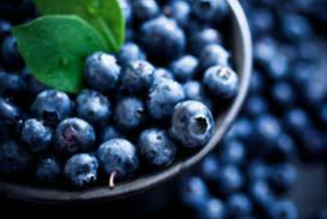THE BASICS FOR MANAGING PITTA TYPES:
The very first thing which should come to mind when thinking of pitta is the brilliant blaze of fire. Pitta types are hot, fiery, oily, and intense. Therefore, management for pitta types is centered around:
- Cooling
- Calming and
- Moderation
HEALTHY DOSE OF LOVING COMPASSION:
Since pitta types also have an inflammatory component, which is inherent to the element of fire, make sure to address pitta types with an extra dose of loving compassion.
TASTES TO PACIFY PITTA:
Ayurveda describes an interesting relationship of taste and its influence upon the body. According to this philosophy, pitta types often are most balanced by sweet, bitter and astringent tastes as these are considered to be cooling and pacifying.
PITTA IN A NUTSHELL:
intense, acidity, irritability, inflammation, loose stools, fever, nausea
PITTA WARNING BELLS:
– Burning Sensation
– Bleeding
– Inflammation
SIMPLE CONSIDERATIONS:
Several considerations for helping to balance pitta types:
– Eat foods which are cool and refreshing
– Avoid foods which are sour, salty, pungent and spicy
– Dairy milk, butter, and ghee are often beneficial for pacifying pitta
– Drink more water and consider aloe vera to help cool down pitta
PITTA QUALITIES AND THIER MANIFESTATIONS:
- Hot
- Sharp
- Light
- Liquid
- Oily
HOT:
Pitta types are anything but ordinary. What brings about this extraordinary “fiery” nature often found in pitta types? The predominant elements for pitta types are fire and water and because of this, pitta individuals can develop excessive heat from within. This hot aspect of pitta can manifest as fever, hives, rashes and even urticaria. Therefore the goal for managing this excess hot quality is twofold:
1.] avoid excessive hot qualities [i.e. direct sunlight, spicy food, heated emotions]
2.] consider cooling elements [i.e. coconut oil, neem, sandalwood]
SHARP:
The sharp quality dominant in pitta types is a double-edged sword. This sharp quality provides the ability to penetrate into great depths of understanding often making pitta types forthright, direct and outspoken. One the other hand, this sharp quality can also create irritability, ulceration and even worse, perforation. Therefore, the goal for managing the excessively sharp quality of pitta is to:
– avoid sharp and aggravating qualities [i.e. alcohol, tobacco, criticism, judgement]
– consider introducing the opposing dull quality [i.e. milk, āmalaki, sandalwood]
LIGHT:
You cannot capture fire within your hands due to its subtle and light quality. If this quality is increased it can cause one to feel dizzy and light-headed. Therefore, individuals who experience this excessive light quality may want to avoid prolonged periods of fasting, and consider the opposing heavy quality [i.e. jatamāmsi, shankha pushpī]. Another consideration is to rub castor oil on the soles of one’s feet at bedtime. This will help to counteract the light quality of pitta with the heavy and dull quality of castor oil.
LIQUID:
Excess liquid quality of pitta can impair the digestive capacity [i.e. Agni] and can lead to acid indigestion and even diarrhea. If there is an excessive liquid quality of pitta then one may want to consider avoiding hydrophillic foods such as yogurt, salty foods, and even avoid fruits such as apricots and grafefruit.
OILY:
Often pitta types have a shiny complexion and this is due to the oily quality of pitta. This oily quality can make pitta types sensitive to oily foods which can aggravate conditions of the gallbladder. It’s interesting that bile, which is stored within the gallbladder, is considered a common element of pitta. Even furhter, if the oily quality of pitta is increased it’s thought to be a contributing factor for inflammatory gallbladder conditions [i.e. cholecystitis]. This excessive oily quality can also make pitta types vulnerable to persistent skin conditions [i.e. acne]. Individuals who have this excessive oily quality may want to consider the opposing dry quality. For example, individuals with persistent acne may want to consider topically applying chickpea flour, brahmī or camphor.
*For educational purposes only, not medical advice.


